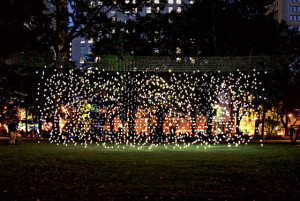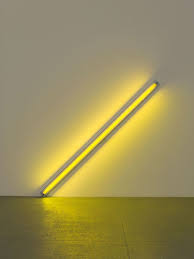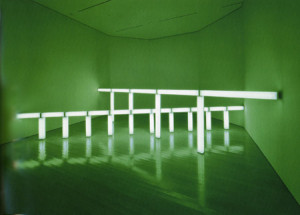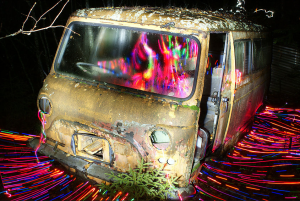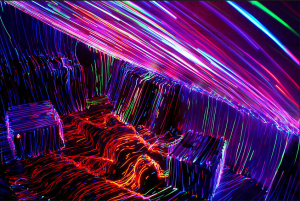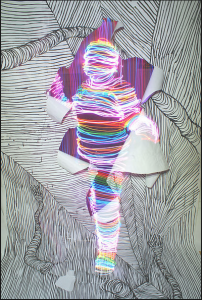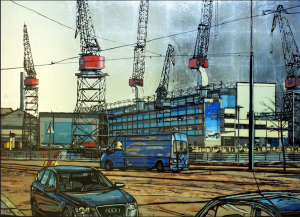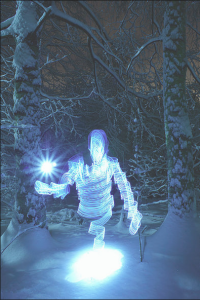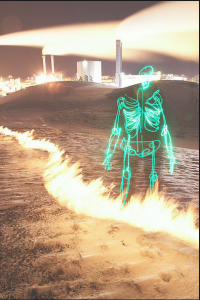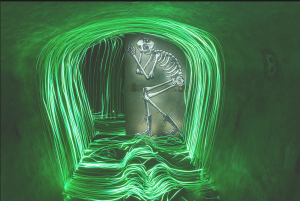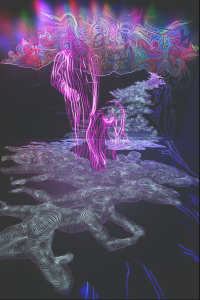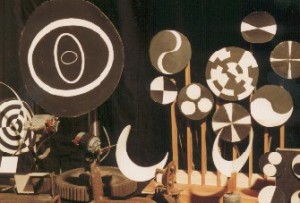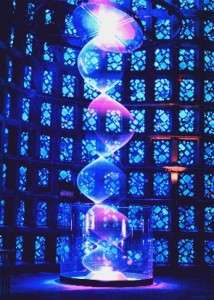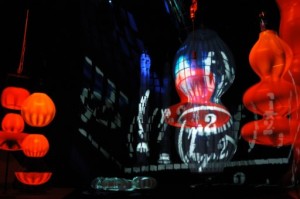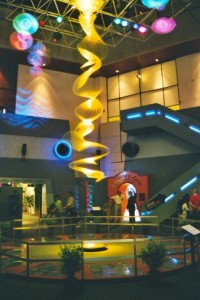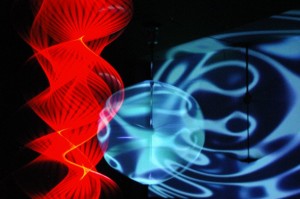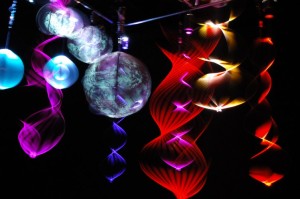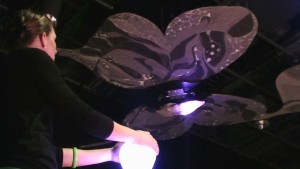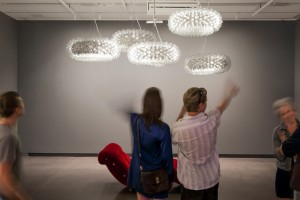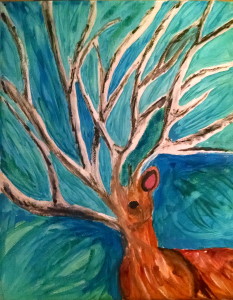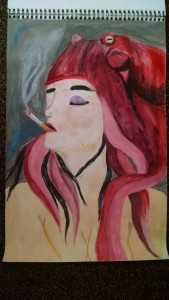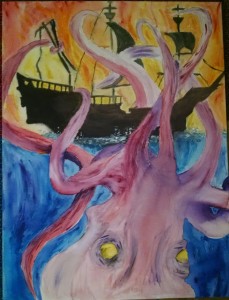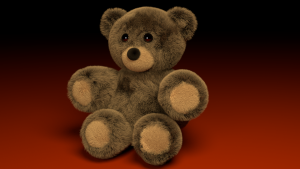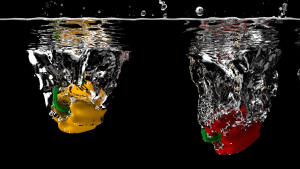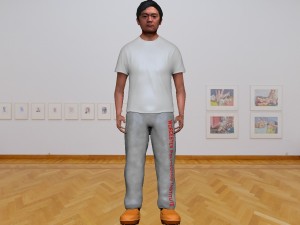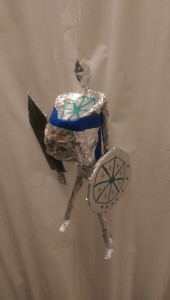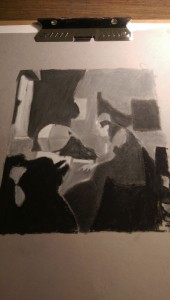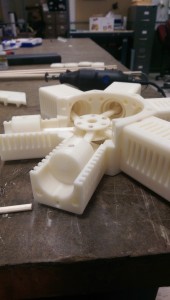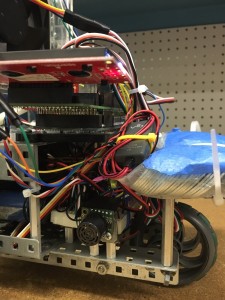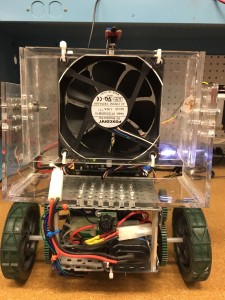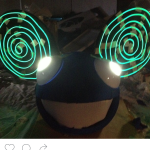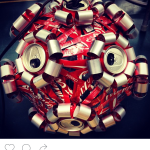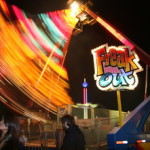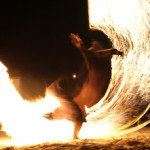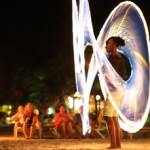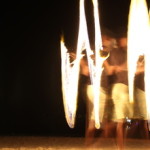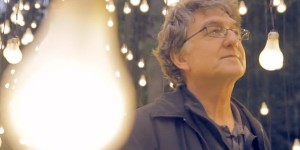
Jim Campbell was in in 1956 in Chicago. When he was 22 he graduated M.I.T. with a bachelors in both Electrical Engineering and Mathematics. These degrees would become the basis for his brand of art. He currently lives in San Francisco.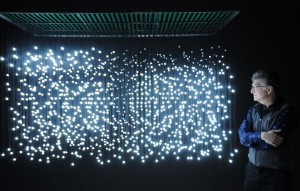
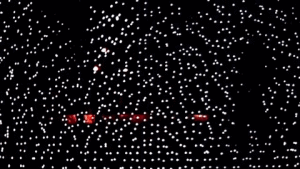 Campbell’s style stems from his love of ultra low resolution. Whereas most high definition displays have around 2 million pixels, his art installations have around 200 to 2000 pixels. Sometimes he uses RGB pixels to give some color to his work, other times he simply uses single color pixels to break down his work. The point of his ultra low resolution is to break down and discard the details of a scene and leave it with just the large brushes of outlines and colors.
Campbell’s style stems from his love of ultra low resolution. Whereas most high definition displays have around 2 million pixels, his art installations have around 200 to 2000 pixels. Sometimes he uses RGB pixels to give some color to his work, other times he simply uses single color pixels to break down his work. The point of his ultra low resolution is to break down and discard the details of a scene and leave it with just the large brushes of outlines and colors.
The technology he uses is simple in it’s function but complex in it’s use and design. It consists of LED’s arrayed in matrices spanning whatever size he is using for that installation. To control those lights, he designs his own PCBs and combines them with embedded chips to control their function. All this is designed and created by him with the assistance of his helpers. His knowledge of Electrical Engineering comes into play here.
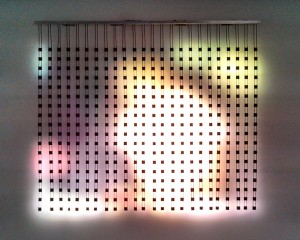 The first Art Piece is called Home Videos (David). This shows the home videos of the family of David, who is a boy born around the same time as Campbell. The installation shows in characteristic ultra low resolution, the aging of David and his early life. Campbell has other “Home Video” sequences, including many he shot, but he most likes David as it is similar to his own life.
The first Art Piece is called Home Videos (David). This shows the home videos of the family of David, who is a boy born around the same time as Campbell. The installation shows in characteristic ultra low resolution, the aging of David and his early life. Campbell has other “Home Video” sequences, including many he shot, but he most likes David as it is similar to his own life.
The next Art Piece is called Journey. This is a 750 foot installation that hangs in the San Diego Airport. This follows the people going on their own journey with the journey of a swimmer moving their way along the installation. Campbell got the video base by filming people from underwater.
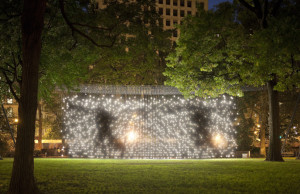 Finally, there is the installation Scattered Light. This is an array of incandescent bulbs that are stuffed with LEDs that hang in a seemingly irregular and chaotic arrangement. Viewed from all angles but one, the lights seem to twinkle with irregular timing and be completely independent. However, if you view the installation from head on, you will see ethereal people walking across the lights. These people were recorded in Grand Central Terminal, for their chaotic and crazy movement.
Finally, there is the installation Scattered Light. This is an array of incandescent bulbs that are stuffed with LEDs that hang in a seemingly irregular and chaotic arrangement. Viewed from all angles but one, the lights seem to twinkle with irregular timing and be completely independent. However, if you view the installation from head on, you will see ethereal people walking across the lights. These people were recorded in Grand Central Terminal, for their chaotic and crazy movement. 